Select Language
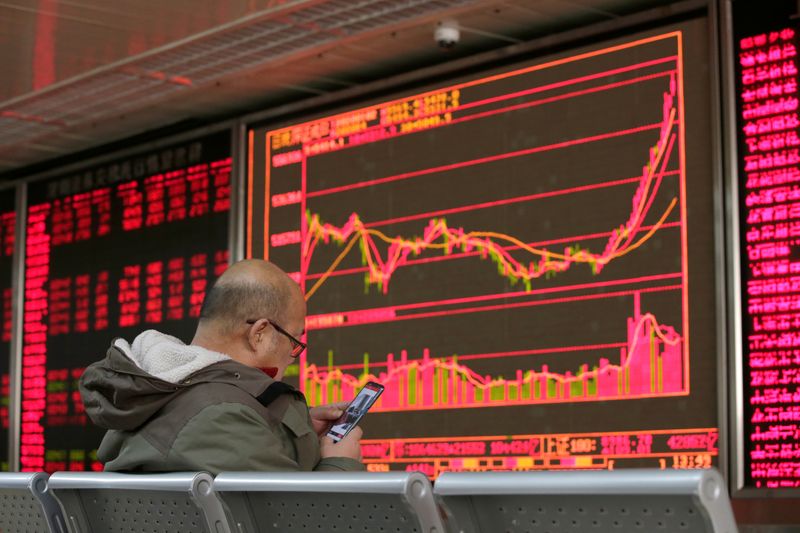
Most Asian stocks rose sharply on Wednesday, tracking an overnight rally on Wall Street after U.S. President Donald Trump flagged an eventual lowering in steep trade tariffs against China.
But mainland Chinese stocks were little enthused by his comments, and traded sideways on Wednesday. Hong Kong stocks, however, rallied with their Asian peers.
Regional markets took a positive lead-in from Wall Street after Trump’s comments. The President also downplayed his recent tirade against Federal Reserve Chair Jerome Powell, granting markets more relief.
U.S. stock index futures rose in Asian trade, with S&P 500 Futures rising 1.4%.
Hong Kong, Japan, lead Asia stock gains on Trump comments
Hong Kong’s Hang Seng index and Japan’s Nikkei 225 were among the top performers in Asia on Wednesday, rising between 1.7% and 2%.
Japan’s TOPIX also added about 1.8%, while South Korea’s KOSPI rose 1.4%. Japanese shares rose past mixed purchasing managers index data, which showed strength in services and a prolonged decline in manufacturing in April.
Asian technology shares were the best performers on Wednesday, benefiting greatly from bargain buying after suffering outsized losses in recent weeks.
But other sectors also rose. Australia’s ASX 200 soared 1.6% on gains in mining and bank stocks, while Singapore’s Straits Times index added 0.7% on sustained gains in local financial stocks.
Futures for India’s Nifty 50 index pointed to a strong open.
Asian markets surged as Trump said he wanted a deal with China where trade tariffs against the country will be well below current levels of 145%. This came after Treasury Secretary Scott Bessent reportedly said that the ongoing Sino-U.S. trade war was unsustainable, and that he expected a de-escalation soon.
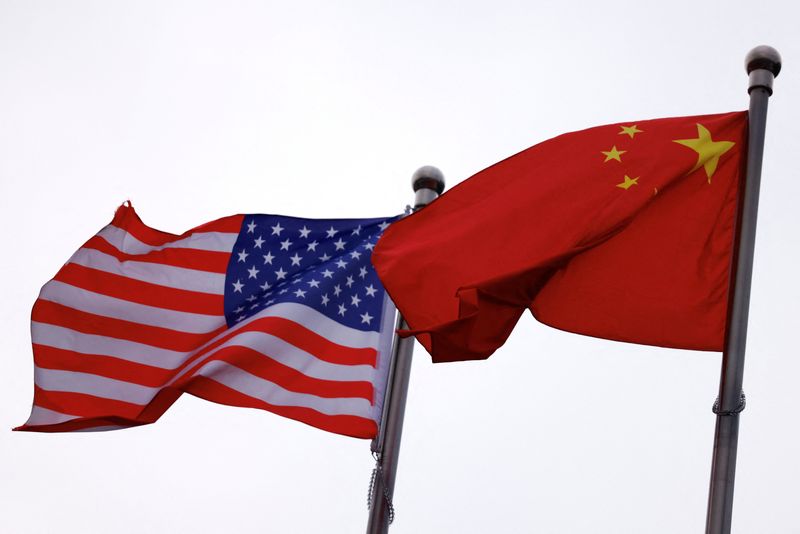
Bank of America analysts cut their annual gross domestic product forecast for China on Tuesday, stating that the country faces significant headwinds from a bitter trade war with the United States.
BofA cut its China GDP forecast to 4% in 2025 from 4.5%, further below the government’s 5% annual target.
The investment bank sees the greatest hit from the tariff shock coming in the second quarter, which could see GDP shrink 1.8% from the prior quarter. China’s economy grew more than expected in the first quarter, but this outperformance is expected to be largely offset by underperformance in the next three quarters.
BofA also cut China’s 2026 GDP forecast to 4.2%.
The softer outlook comes largely on the back of a bitter trade war between the U.S. and China, after U.S. President Donald Trump slapped China with 145% trade tariffs. China retaliated with a 125% tariff against the United States.
The U.S. tariffs are expected to greatly crimp China’s exports, which are a major GDP driver.
Still, BofA said that the trade conflict could push China back towards growth-centric policy, while Beijing could also be forced to open up further in trade and investment with the rest of the world.
China is also expected to dole out more stimulus measures, and could announce even more measures to boost household consumption. BofA said its downgraded forecast reflected additional stimulus measures.
But BofA also warned that if Beijing unlocked stimulus a “little too late,” growth could worsen further by the fourth quarter of 2025.
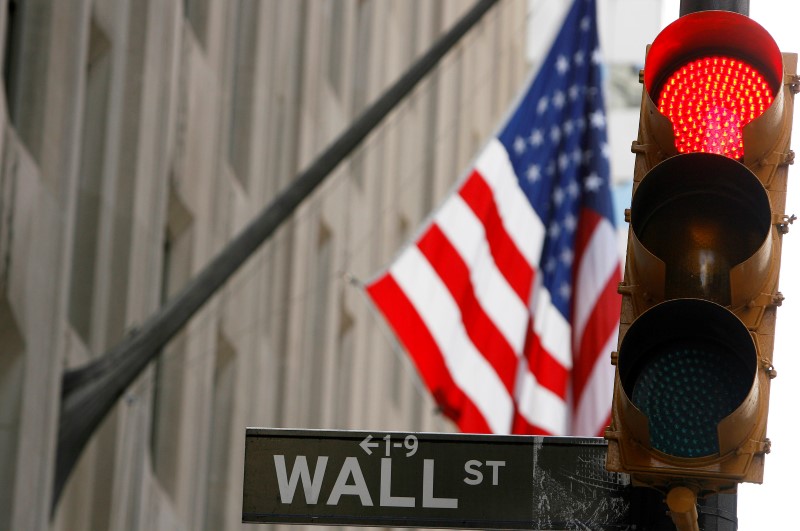
The S&P 500 closed higher Tuesday, clawing back losses from a day earlier after Treasury Secretary Scott Bessent stokes hopes for a possible de-escalation in the U.S.-China trade war.
At 4:00 p.m. ET (21:00 GMT), the Dow Jones Industrial Average rose 1016 points, or 2.7%, the S&P 500 index gained 2.5%, and the NASDAQ Composite climbed 2.7%.
Bessent tees up hopes of U.S.-China trade deescalation
U.S. Treasury Secretary Scott Bessent reportedly said that he expects de-escalation in the ongoing tariff standoff between the US and China in the "very near future, CNBC reported, citing individuals present at the event.
"The next steps with China are, no one thinks the current status quo is sustainable” with tariff rates at their current levels," Bessent said at a private investor summit hosted by JPMorgan Chase (NYSE:JPM) & Co. (NYSE:JPM), CNBC reported, citing sources. The Treasury Secretary said he expects there will be a de-escalation” in the U.S.-China trade war in the “very near future,” a person in the room told CNBC.
The remarks come on the heels of a Bloomberg report. citing individuals present at the event, that the Treasury Secretary anticipates a de-escalation in the situation.
Fed speakers, meanwhile, continued to rise concern about the impact of tariffs. Minneapolis Federal Reserve President Neel Kashkari flagged worries about a tariff-driven recession following a sharp turn lower in economic confidence in the wake of President Donald Trump’s tariff rollout.
Richmond Fed president Thomas Barkin, however, delivered remarks that were in sharp contrast to those of his colleagues on inflation, saying that inflation expectations may have "loosened." This suggests that the Richmond Fed president’s focus could be on the other Fed’s mandate maximum employment pointing to possible backing of rate cuts if the labor market deteriorates.
Earnings continue to flow
The quarterly earnings season continued apace Tuesday.
Verizon Communications (NYSE:VZ) stock rose 0.6% after the telecom giant reported that retail phone customers slipped by more than expected, as it backed away from promotions to attract customers to help protect profits.
3M Company (NYSE:MMM) stock rose 8% after the industrial conglomerate reported first-quarter 2025 results that exceeded analyst expectations, driven by organic sales growth and improved margins.
Halliburton Company (NYSE:HAL) stock fell 5.6% after the oilfield services provider posted lower first-quarter profit as a slowdown in drilling activity in North America dampened demand for its services and equipment.
Northrop Grumman (NYSE:NOC) stock slumped nearly 13% after the aerospace and defense firm slashed its annual profit outlook and missed first-quarter earnings estimates by a wide margin.
Kimberly-Clark (NYSE:KMB) stock fell more than 1% after the consumer goods company slashed its annual profit forecast, warning that the broad-based trade tariffs would push up its supply-chain costs.
GE Aerospace (NYSE:GE), meanwhile, climbed 6% as better-than-expected quarterly earnings offset revenue that just missed of Wall Street expectations.
Amazon (NASDAQ:AMZN), up more than 3%, clawed back some losses from a day earlier, when the tech giant said it would be pausing some investment into new data centers.
Additionally, Tesla (NASDAQ:TSLA),will release its latest numbers after the close - the first of Wall Street’s so-called Magnificent Seven to report this earnings season.
Analysts are bracing for a negative quarter, as Tesla grapples with tepid demand and a backlash to CEO Elon Musk’s political activities.
Sales at Tesla have slumped as the firm deals with increased competition and controversy over Musk’s close proximity to Trump. Musk has helmed the so-called Department of Government Efficiency, or DOGE, which has been tasked by the White House with helping cut the size of the federal government.
Against this backdrop, investors will likely be keen for Musk to provide more details on the roll-out of a more affordable vehicle launch and plans for Tesla’s much-hyped robotaxi business.
(Peter Nurse, Ambar Warrick contributed to this article.)

Updates with the latest moves, milestones
Investing.com-- Gold prices surged to hit a new record high in Asian trading on Tuesday, buoyed by sustained safe-haven appeal over elevated U.S.-China trade tensions, and concerns around President Donald Trump’s plan to overhaul the Federal Reserve.
As of 00:27 ET (04:27 GMT), Spot Gold jumped 1.7% to $3,482.76 per ounce, while Gold Futures expiring in June surged 1.9% to $3,491.20 an ounce.
Gold jumped more than 3% on Monday and has hit consecutive record highs in the previous three sessions, driven largely by escalating geopolitical risks, strong central bank demand, and persistent inflation concerns.
Trump mulls ousting Fed’s Powell, dollar hits 3-yr low
The latest rally was sparked by concerns surrounding U.S. monetary policy, after President Donald Trump unveiled plans to overhaul the Federal Reserve.
White House economic advisor Kevin Hassett said on Friday that President Trump and his team were continuing to study whether they could fire Fed Chair Jerome Powell.
Trump on Monday reiterated his call for the Fed to reduce rates, saying the U.S. economy could slow down if the Fed does not cut interest rates immediately.
Last week, Powell said that the central bank was not inclined to cut interest rates in the near future, citing the possible inflationary pressures and economic uncertainties stemming from the new tariffs.
These developments have stoked concerns about the independence of the Fed, sending ripples through financial markets.
The U.S. dollar remained weak after slumping to a three-year low on Monday against a basket of major currencies.
A weaker dollar tends to bolster demand for gold, as it makes the metal more affordable to investors holding foreign currencies.
US-China trade tensions remain elevated
China issued a stern warning to nations contemplating trade agreements with the U.S. that could undermine Chinese interests.
The Chinese Ministry of Commerce accused Washington of employing tariffs and monetary sanctions to coerce countries into limiting their trade with China.
Beijing emphasized that any such agreements detrimental to its interests would prompt reciprocal countermeasures.
This warning comes amid escalating tensions in the ongoing Sino-U.S. trade conflict, which has seen the U.S. impose tariffs of up to 145% on Chinese goods, leading to retaliatory duties from China.
Among other precious metals, Silver Futures gained 0.8% to $32.795 an ounce, while Platinum Futures rose 1% to $976.10 an ounce.
Copper hits 2-week high on weaker greenback
Copper prices extended on Tuesday to hit a two-week high as the greenback remained weak, but concerns of hefty U.S. tariffs on top importer China kept investors cautious.
Benchmark Copper Futures on the London Metal Exchange rose 1% to $9,311.60 a ton, while Copper Futures expiring in May gained 1.1% to $4.7713 a pound.
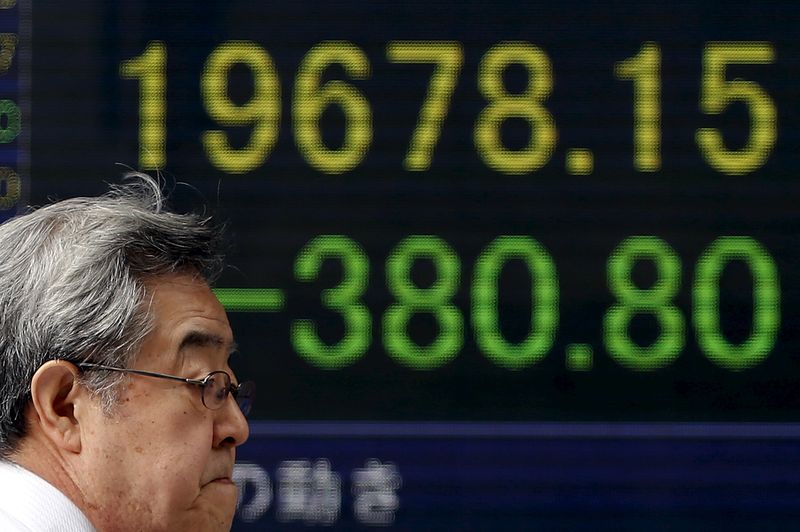
Most Asian stocks moved in a flat-to-low range on Tuesday as investors remained on edge over U.S. President Donald Trump’s trade tariffs and his persistent criticism of Federal Reserve Chair Jerome Powell.
Trump’s comments on Powell, specifically that the U.S. risks a recession if the Fed does not cut interest rates, sparked steep losses in Wall Street on Monday, a measure of which spilled over into Asia.
But U.S. stock index futures rose in Asian trade, with S&P 500 Futures up 0.6% amid signs of a potential rebound. Focus was on key upcoming first-quarter earnings this week, with Tesla Inc (NASDAQ:TSLA) to report later in the day.
Sentiment towards Asian markets remained weak as the U.S. and China showed few signs of deescalating a bitter trade war. Fears of tighter monetary conditions in Japan also weighed.
China stocks flat, Hong Kong dips; China warns against US trade deals
China’s Shanghai Shenzhen CSI 300 and Shanghai Composite indexes moved in a tight range on Tuesday, while Hong Kong’s Hang Seng shed 0.5% as trade resumed after a long weekend.
E-commerce stocks JD.com and Meituan slumped over 6% each, amid growing signs of heated competition in the lucrative food delivery sector.
China’s Commerce Ministry on Monday warned countries against striking trade deals with the U.S. at Beijing’s expense, while also accusing Washington of abusing tariffs.
Beijing’s comments come amid a bitter trade war between the world’s biggest economies, after Trump hiked tariffs on China to 145% earlier in April. China retaliated with a 125% levy on U.S. goods.
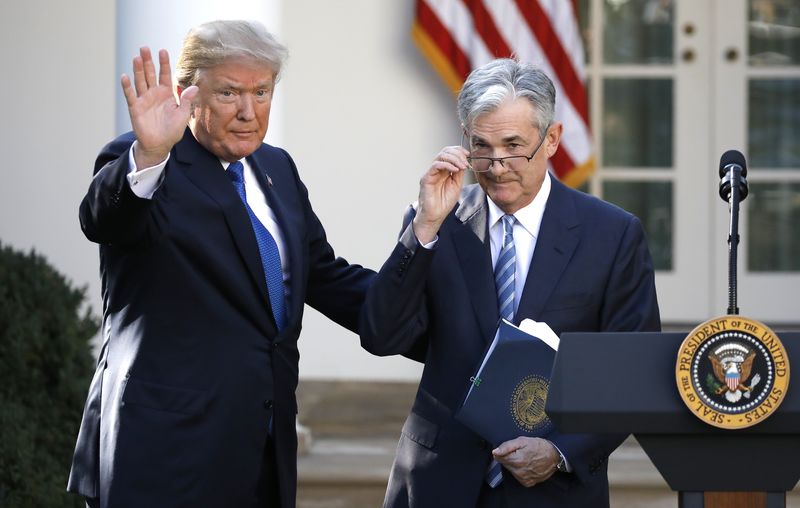
If tariffs weren’t enough for markets to contend with, President Donald Trump has thrown another major worry into the market with the calling of the head of Federal Reserve Chairman, Jerome Powell.
Trump has been calling on Powell to lower interest rates and last week called for his termination following hawkish comments from the Fed Chairman.
“Powell’s termination cannot come fast enough!” Trump stated last Thursday after calling him “too late” to cut rates.
Trump upped the ante on Monday, calling on Powell to initiate “preemptive cuts” or risk a slowing economy.
“With these costs trending so nicely downward, just what I predicted they would do, there can almost be no inflation, but there can be a SLOWING of the economy unless Mr. Too Late, a major loser, lowers interest rates, NOW,” Trump stated.
Unfortunately, it is Trump’s tariff policy that has Powell & Co. tightly on hold.
In his speech last week in Chicago, Powell highlighted that “[t]ariffs are highly likely to generate at least a temporary rise in inflation.” He also warned that their effects “could also be more persistent.” The Fed Chairman promised to wait for “greater clarity before considering any adjustments to our policy stance.”
Market watchers view the standoff between Trump and Powell as a power struggle over the Fed’s independence, which has markets worried.
Powell’s term as Fed Chairman runs through May of 2026, so there are legal questions arising if Trump has the authority to remove him before that.
“The risk is now twofold. First, that Powell holds the line and policy stays restrictive longer than markets had priced,” Nigel Green, CEO of deVere Group stated. “Second, that Trump intervenes—publicly or politically—sparking concerns over central bank independence.”
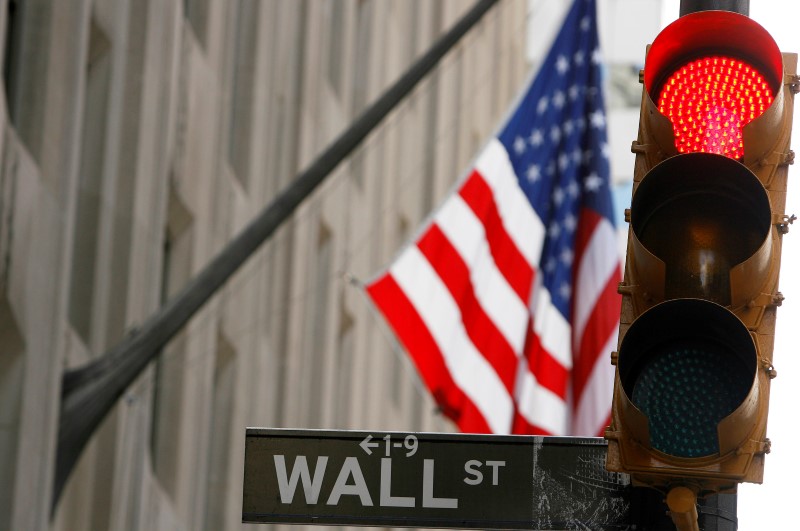
U.S. stock index futures fell on Monday evening, extending losses from a sharp fall on Wall Street as President Donald Trump’s fresh attack on Federal Reserve Chair Jerome Powell battered sentiment.
Investors remained on edge amid uncertainty over Trump’s plans for steep trade tariffs, even as his administration flagged several trade agreements.
Markets were also testy before a string of key technology earnings due this week, with electric car-maker Tesla (NASDAQ:TSLA) set to report on Tuesday.
S&P 500 Futures fell slightly to 5,183.25 points, while Nasdaq 100 Futures fell 0.1% to 17,904.0 points by 19:11 ET (23:11 GMT). Dow Jones Futures edged lower to 38,20.0 points.
Trump’s Powell comments, tariff uncertainty rattle Wall St
Futures fell following a deeply negative session on Wall Street, as Trump kept up his criticism of Powell and called for “preemptive” interest rate cuts, warning that the economy would slow otherwise.
Trump also kept up his harsh rhetoric against Powell, after having earlier called for the Fed Chair’s removal, sparking concerns over the Fed’s independence under Trump. Powell’s term ends only in May 2026, and it is unclear if Trump will be able to remove the Fed Chair before this.
Powell had last week warned that Trump’s tariffs could underpin inflation, and that the Fed will stay its hand until it has more clarity on the tariffs and their impact.
Trump’s comments on interest rates, coupled with persistent uncertainty over his tariff agenda, saw Wall Street end sharply lower on Monday. The S&P 500 fell 2.4% to 5,158.20 points, while the NASDAQ Composite slid 2.6% to 15,870.90 points. The Dow Jones Industrial Average fell 2.5% to 38,170.41 points.

JAKARTA (Reuters) -South Korea’s LG Energy Solution has formally withdrawn from a 142 trillion rupiah ($8.45 billion) project in electric vehicle battery making in Indonesia, the company said on Monday.
LGES and the Indonesian government signed a deal on the so-called Indonesia Grand Package project in late 2020, which include investments across the EV battery supply chain.
"Taking into account various factors, including market conditions and investment environment, we have agreed to formally withdraw from the Indonesia GP (Grand Package) project," LGES said in a statement.
"However, we will continue to explore various avenues of collaboration with the Indonesian government, centring on the Indonesia battery joint venture, HLI Green Power," it added.
HLI Green Power is a joint venture led by LGES and Hyundai Motor (OTC:HYMTF) Group. The company last year inaugurated Indonesia’s first battery cell production plant for EVs with annual capacity of 10 Gigawatt hours of battery cells, with plans to expand the capacity in the second phase of investment.
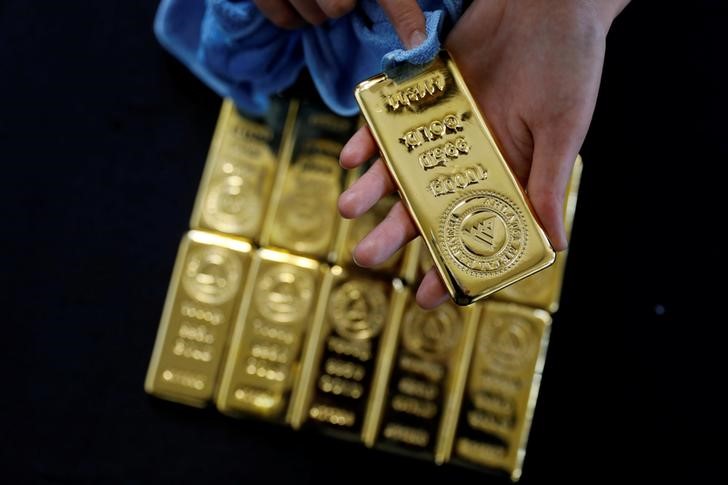
Gold prices surged to a new record high in Asian trading on Monday, as the dollar tumbled amid President Donald Trump’s plan to overhaul the Federal Reserve, while heightened Russia-Ukraine tensions after a brief Easter truce boosted bullion’s safe-haven appeal.
As of 03:40 ET (07:40 GMT), Spot Gold jumped 1.4% to $3,374.93 per ounce, after reaching a record high of $3,385.27 per ounce earlier in the session.
Gold Futures expiring in June surged 1.8% to $3,388.20 an ounce.
The recent climb in gold prices has been driven largely by escalating geopolitical risks, strong central bank demand, and persistent inflation concerns.
Gold rallies as Trump’s Fed overhaul plan raises uncertainty
Monday’s rally was largely driven by renewed uncertainty surrounding U.S. monetary policy, after President Donald Trump unveiled plans to overhaul the Federal Reserve.
White House economic advisor Kevin Hassett said on Friday that President Trump and his team were continuing to study whether they could fire Federal Reserve Chair Jerome Powell.
This stoked concerns about the independence of the Fed, sending ripples through financial markets.
The news weighed heavily on the U.S. dollar, which slumped to a three-year low against a basket of major currencies.
A weaker dollar tends to bolster demand for gold, as it makes the metal more affordable to investors holding foreign currencies.
Russia-Ukraine tensions escalate after one-day truce
The yellow metal was also supported by heightened tensions between Russia and Ukraine despite a one-day ceasefire announced by Russian President Vladimir Putin.
Putin unexpectedly announced a one-day ceasefire in Ukraine on Saturday to mark the Orthodox Easter holiday.
However, Russia launched missile and drone strikes on Ukraine early Monday, just hours after the expiration of the ceasefire.
Both Kyiv and Moscow have accused each other of violating the truce, which the Kremlin had confirmed would not be extended.
Among other precious metals, Silver Futures gained 1% to $32.773 an ounce, while Platinum Futures were unchanged at $978.0 an ounce.
Copper prices rise on weaker greenback, US-Sino tensions cap gains
Copper prices rose on Monday as the greenback weakened, but gains were limited due to concerns of hefty U.S. tariffs on top importer China.
China has been slapped with a total of 145% tariffs.
Benchmark Copper Futures on the London Metal Exchange rose 0.3% to $9,231.0 a ton, while Copper Futures expiring in May gained 0.8% to $4.4733 a pound.
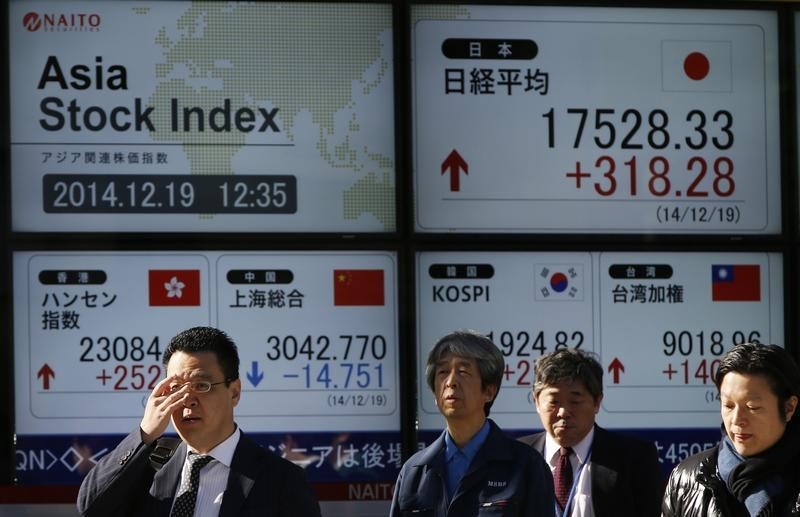
Asian stocks were mixed in Monday’s holiday-thinned session, as Chinese equities rose after the country’s central bank kept loan prime rates steady, while Japanese shares fell after stronger-than-expected inflation data from last week.
Stock markets in Australia, New Zealand, and Hong Kong were closed for the Easter holiday, contributing to lower trading volumes and subdued moves across the region.
Major U.S stock indexes suffered weekly losses last week, while futures tied to these benchmark indexes opened lower in Asian trading on Monday.
China stocks edge up, PBoC keeps loan prime rate unchanged
Data on Monday showed that the People’s Bank of China held its benchmark loan prime rate steady, in line with expectations, signaling Beijing’s preference for boosting economic growth through fiscal measures rather than additional monetary easing.
The PBOC left its one-year LPR at 3.1%, while the five-year LPR, which is used to set mortgage rates, was left at 3.6%.
Chinese authorities have recently proposed additional measures to boost consumer spending, including enhanced social welfare programs and subsidies for household goods.
China’s Shanghai Composite edged 0.3% higher, while the Shanghai Shenzhen CSI 300 gained 0.2%.
Japan’s Nikkei drops after strong CPI print complicates BOJ rate path
Data on Friday last week showed that Japan’s core consumer price index (CPI), which excludes fresh food prices, grew 3.2% y-o-y, matching estimates, but above the 3.0% rise seen in February.
The reading is closely watched as a gauge of underlying inflation by the Bank of Japan, and it remained well above the central bank’s 2% annual CPI target.
Despite rising inflation, analysts moved their rate hike forecast from May to July, citing uncertainty around U.S. tariff policies.
Japan’s Nikkei 225 index fell 1.2% on Monday while TOPIX declined 1.1%.
Investors remain cautious around Trump tariffs
Investors were still cautious in light of the ongoing global economic uncertainty fueled by trade tariffs introduced by U.S. President Donald Trump.
Trump’s trade tensions with China remain elevated. Last week, Bloomberg reported that China was open to beginning trade talks with the Trump administration, but demanded that the White House show more respect.
U.S. President Donald Trump has also said “big progress” was made after a meeting with a Japanese trade delegation in Washington last week.
These developments alleviated some concerns, although investors still remained on edge.
South Korea’s KOSPI was largely unchanged.
Thailand’s SET Index fell 0.4%, while Singapore’s Straits Times Index gained 1%.
Futures for India’s Nifty 50 were 0.4% higher.
A core reading that excludes both fresh food and energy prices also rose 2.9% in March from 2.6% in the prior month. ]

